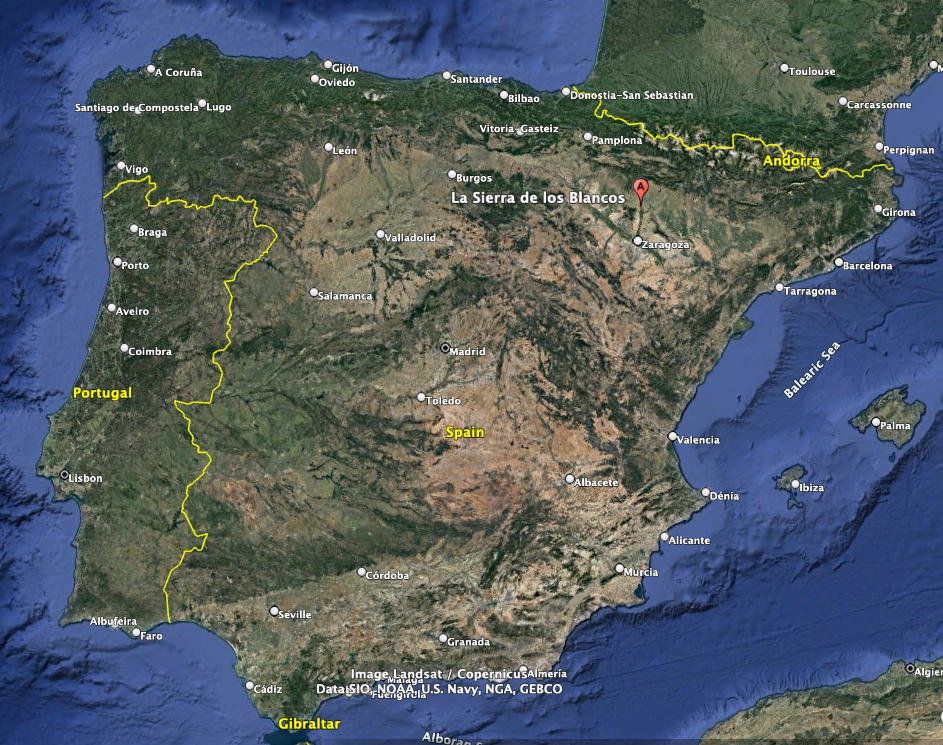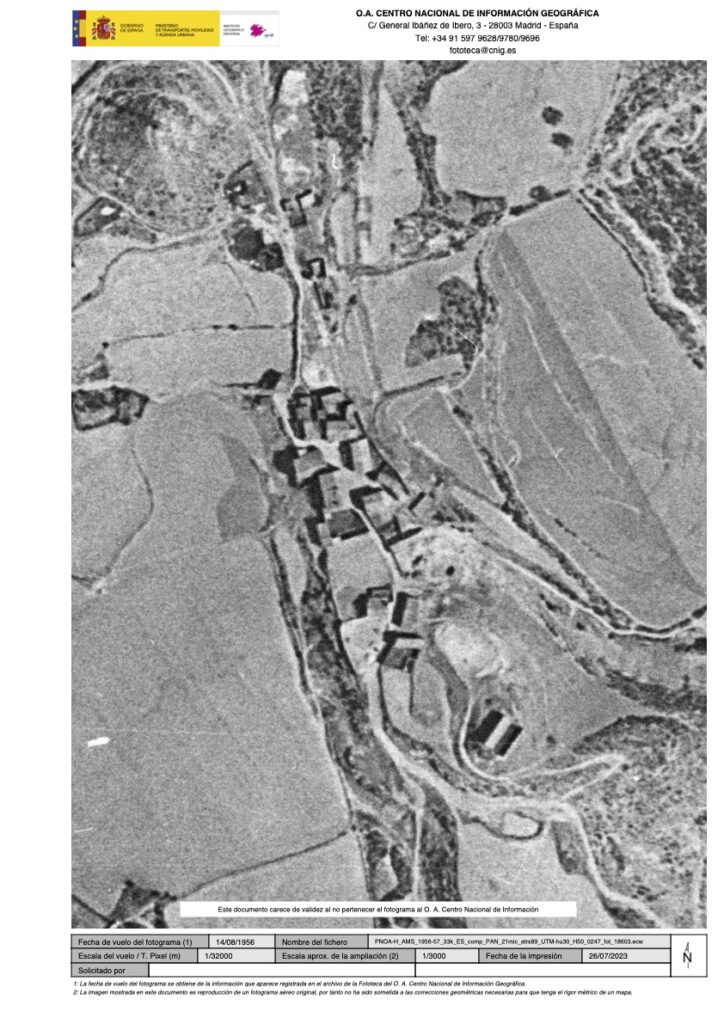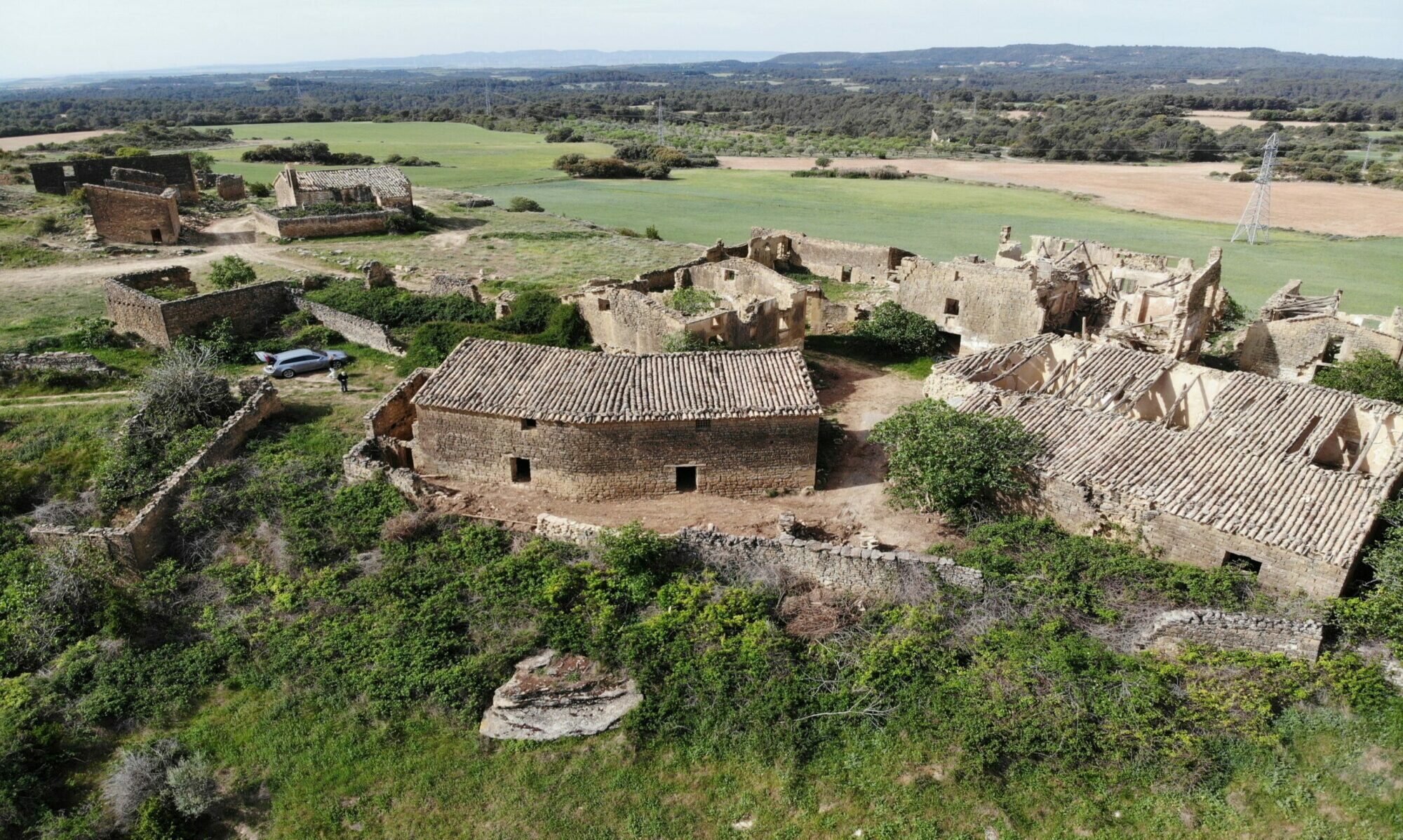Ardisa – Zaragoza – Aragon – España

Sierra de los Blancos is a Spanish town belonging to the municipality of Ardisa, in the province of Zaragoza. It belongs to the Cinco Villas region, in the autonomous community of Aragon.
The towns of Sierra de los Blancos (uninhabited) and Las Casas de Esper (inhabited) are included in the municipal term of Ardisa. Other towns in the area have a very similar architecture, such as Sierra Estronada, Lacasta or Júñez, all very small nuclei, and partially inhabited.
The first vestiges of the existence as a town date from the 18th century, in 1739, although its foundation started in the 1500s.. In 1739 Roque Alberto Faci Agud (Father Faci), historian of Aragon during the 18th century, made reference to the nearby hermitage of Nuestra Señora de Miramonte, and referred to Sierra de los Blancos as a town with five houses, half a league from the hermitage, and Casas de Esper with 8 houses.
On the other hand, other historical texts recognize the infanuality of Joseph Visús, inhabitant of the town, and making reference to Casa Visús as the most important in the town.
In the middle of the 19th century, in the Geographical Dictionary of Madoz it already appeared linked to Ardisa, and apparently it had 8 houses and about 33 inhabitants. During the 1930s of the 20th century, it had 66 inhabitants, finally being depopulated in the 1960s, with one family moving to Ardisa and the rest to other towns or cities such as Zaragoza.
The place consists of several houses in a state of ruin, of popular architecture of sandstone ashlars; and a church built under the invocation of Santa Águeda. It is accessible by car from Ardisa along a dirt track and is frequented by cyclists who take numerous routes through La Hoya de Huesca and the Las Cinco Villas region.
During the 2010s, attempts have been made to occupy it, but the lack of basic infrastructure has caused it to be abandoned again.
Landscape, urban and architectural characteristics
The nucleus of Sierra de los Blancos is located at the southern end of the foothills that define the Hoya de Huesca-Plana de Uesca, located between the southern face of the Sierra de Loarre and the plain formed by the Arba de Biel river, where the Cinco Villas region is located.
It is located at the top of a hill that borders the valley of the Río Gállego to the east. Due to its elevated position at the end of these foothills, at the meeting point between the Arba de Buel and Gállego valleys, outlining the north of the Ebro Valley, it has privileged views. From the upper part of the town, the Ebro Valley opens to the south, interrupted by the Sierra de Alcubierre, in Los Monegros, to the southeast; and the Sierra de las Pedrosas and the Montes de Castejón to the southwest.
To the east you can see the Gállego Valley, with the Sotonera reservoir and this landscape of hills is maintained in which the Sierra dies slowly towards the Ebro Valley.
In the north you can see, from afar, the Sierras de Loarre and Sierra de Guara, the latter to the northeast, and the canyon formed by the Gállego when it crosses this mountain range, which reveals the Sierra de la Peña and the Pyrenees in the background.
The town is distributed through three groups of buildings along a street that crosses the top of the hill. The first group is made up of two warehouses and corrals, and an old building where the transformer was located; in the lower part.
The second group, more compact, makes up the nucleus of the town with between 6 and 8 houses of two or three heights, and a little separated by the church, a cistern and another house.
The third group is a single house, in the highest part of the town, separated from the rest.
The roads of the town are all dirt and the material, sandstone ashlars, stands out as a characteristic element of the urban complex. These are used both in the buildings themselves and in the closures of farms and as part of the walls that save unevenness, providing great solidity to the whole.
The buildings in general have a structure of load-bearing walls of sandstone ashlars, and the roof structure and wooden lintels, all materials from the area.
Most of the residential buildings have a ground floor for storage of tools or as a stable and corral, and an upper floor where the main housing program is developed. The slabs that have survived are mostly entrevigado made of reeds, and the roofs are made of ceramic tiles.

La Sierra de Los Blancos in 1956.
All the structures and roofs are still with original integrity.
